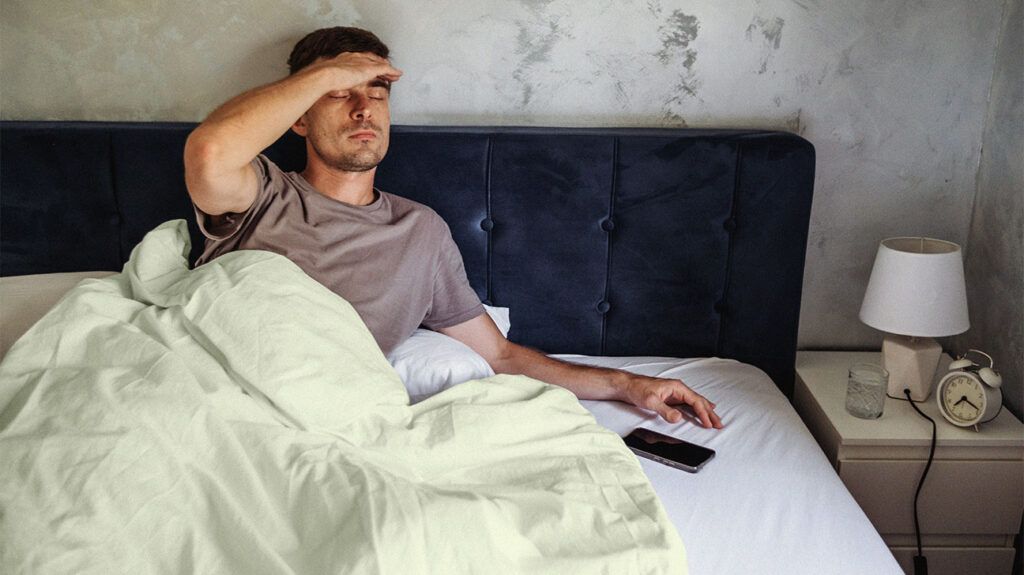Primary insomnia is where insomnia occurs without another cause, such as a psychiatric condition.
Insomnia is a sleep disorder that disrupts someone’s ability to fall or stay asleep.
Primary insomnia is a type of insomnia that occurs without any other medical, psychiatric, or environmental cause. The other major category of insomnia is secondary insomnia, where the symptoms are the result of another condition.
This article provides an overview of primary insomnia, including its symptoms, causes, and treatment options.

Insomnia is
The condition can present as a short-term issue across a few days or weeks. It can also be chronic, where it lasts at least three times per week for 1 month or more.
Primary insomnia is a type of chronic insomnia that occurs independently, without links to any other medical, psychiatric, or environmental causes. It causes restlessness and wakefulness during the night, which leads to sleepiness and tiredness in the day.
Vs. secondary insomnia
Secondary insomnia results from underlying issues, such as medical conditions, psychiatric disorders, or substance use. Generally, treating the underlying cause eases sleep difficulties in secondary insomnia, whereas healthcare professionals generally manage primary insomnia independently.
The
- laying awake for a while before falling asleep at night
- sleeping in small bursts with frequent periods of being awake throughout the night
- waking up too early in the morning
- low quality sleep, where people wake up feeling unrested and irritable during the day
Other symptoms someone with primary insomnia might experience include:
- difficulty concentrating
- anxiety about sleep
- issues with memory
- lack of motivation for daily tasks
- stomach aches and other stomach issues
- mistakes and accidents at work
- headaches
These symptoms vary from person to person. They may also change depending on the amount and quality of sleep someone gets during the week.
Read more about the symptoms of insomnia.
Unlike secondary insomnia, it is rarely clear what causes primary insomnia. Short-term insomnia can have many causes, including stress, low sleep hygiene, or environmental factors.
However, primary chronic insomnia has no links to other factors and is a diagnosable condition in its own right.
Some
Generally, diagnosing primary insomnia involves a thorough evaluation by a healthcare professional.
Diagnosis
For example, they might ask about:
- the frequency and duration of sleeping difficulties
- the time between going to bed and falling asleep
- a person’s feelings after waking up and throughout the day
- a person’s habits before bed, such as screen use
- loud snoring or waking up gasping
Healthcare professionals may also ask people to keep a sleep diary. This is a systematic way of monitoring someone’s sleep and daytime habits. They can use this information to determine the causes of insomnia symptoms.
Healthcare professionals may make a diagnosis when someone reports experiencing sleep difficulties at least 3 nights a week for over 1 month.
An important step in differentiating primary from secondary insomnia is to
Diagnosis may also include tests, such as:
- sleep studies to check for other underlying problems, such as sleep apnea
- actigraphy, which involves wearing a device that measures rest and activity during the night
- blood tests to check for other medical problems, such as thyroid conditions
The treatment for primary insomnia varies depending on various factors, including the person’s general sleep hygiene and medication use.
Healthcare professionals may use a combination of treatments to manage primary insomnia treatments,
- Sleep hygiene: Healthcare professionals may identify behavior patterns that may disrupt healthy sleep, such as daytime naps, using screens before bed, or caffeine intake. They will work with people to identify and help optimize sleep hygiene habits.
- Cognitive behavioral therapy for insomnia (CBTi): CBTi is a form of therapy that focuses on changing negative thoughts and behaviors relating to sleep. It includes techniques such as sleep education, stimulus control, and relaxation exercises. Studies show that CBTi is more effective than medications for insomnia.
- Medications: Some medications might also help for short-term relief or in severe insomnia cases. For example, healthcare professionals may prescribe benzodiazepines, which produce anti-anxiety and sedative effects. Over-the-counter medications that cause drowsiness, such as antihistamines, might also help.
Learn more about treatment for insomnia.
How long does primary insomnia last?
Primary insomnia is a chronic condition that lasts at least 1 month. Chronic cases typically require ongoing monitoring and treatment. However, some people may manage their symptoms effectively and experience long periods of healthy sleep.
What are the three types of insomnia?
There are several ways of categorizing insomnia. Three broad categories of insomnia can
- chronic insomnia, which is where sleep problems occur at least three times per week for the last 3 months
- short-term insomnia, which occurs when sleep problems have been present for 3 months
- other insomnia disorders, which refer to difficulty falling or staying asleep but do not fit into the chronic or short-term insomnia categories.
Resources for healthy sleep
To discover more evidence-based information and resources on the science of healthy sleep, visit our dedicated hub.
Primary insomnia is a sleep disorder that causes difficulty falling asleep, staying asleep, or getting high quality sleep. It occurs without another underlying cause, such as a psychiatric problem or environmental cause.
The condition can significantly affect daily functioning, causing daytime fatigue, irritability, and decreased quality of life.
People with primary insomnia may need to adjust their lifestyle to maintain good sleep hygiene, such as restricting caffeine intake. Healthcare professionals may also suggest therapy or medications to manage the symptoms.
